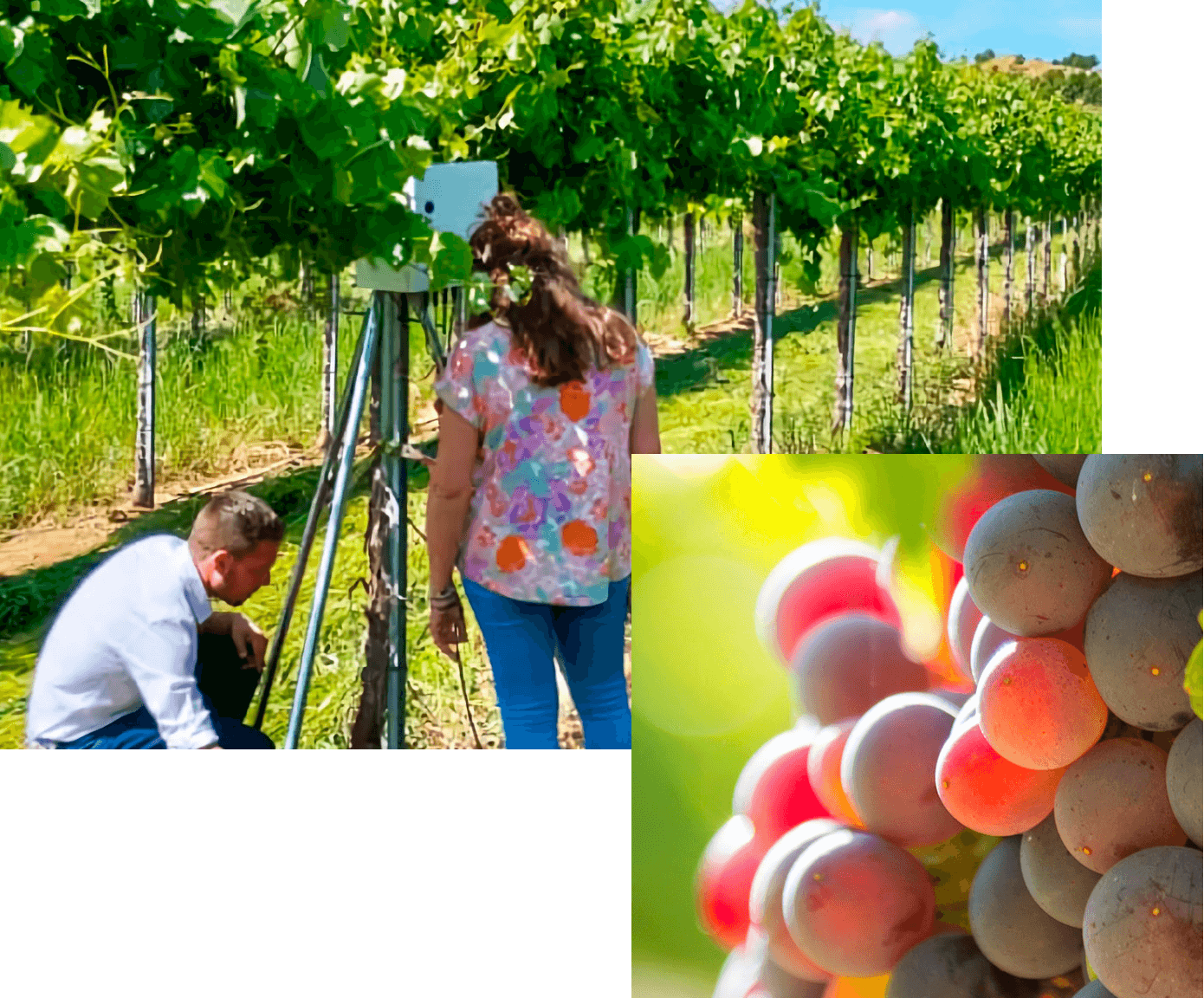
Funds from the European Recovery Instrument (EU Next Generation) and articulated through the National Rural Development Programme and the European Agricultural Fund for Rural Development (EAFRD).
Go back
AlgaVid project


The agricultural sector is currently facing numerous environmental and nutritional challenges. With the establishment of the European Green Deal, there is increasing pressure on agriculture to reduce its reliance on chemical fertilizers and pesticides.
In response, the National Rural Development Program and the European Agricultural Fund for Rural Development (EAFRD) are investing in innovation projects aimed at improving the productivity, sustainability, and profitability of crops. This is particularly important for vineyards, which are heavily dependent on nitrogen fertilizers for growth and productivity.
One of the key alternatives to synthetic fertilizers is biostimulant products. In this context, the operational group ‘Digitalization of the Effects Produced by Microalgae-Based Biostimulants and Soil Bioregulators, Produced at the Farmer’s Facility, on Vine Crops’, known as ‘AlgaVid’, was established.
This supra-regional consortium is coordinated by Fundación Ayesa and includes several key partners: Cooperativas Agro-alimentarias de Andalucía, the startup G2G Algae Solutions, the Leitat Technology Center, Viñedos del Río Tajo (part of the González Byass Wine and Spirits Family), and the Agroecosystem Foundation. Additionally, it has the support of Bodegas Robles (Montilla, Córdoba) and winemaker Beatriz Larrosa (Borja, Zaragoza).
Over the past two years, the team has worked to demonstrate the viability of bioproducts derived from microalgae in wine production in Andalusia, Aragón, and Castilla-La Mancha. This project aligns with the European Union’s green agenda, promoting the development of plant-based products that help sequester carbon dioxide (CO2) in the soil, improve plant fertility, enhance soil structure and recovery, and reduce the use of phytosanitary products.
The project has a total budget of €607,083.57, of which €599,883.57 is funded by the Next Generation EU funds, provided through the National Rural Development Program and the European Agricultural Fund for Rural Development (EAFRD).
The goal of the AlgaVid project was to replace chemical fertilizers in vineyards and demonstrate the effectiveness of biostimulants derived from microalgae. To achieve this, the project was structured in four key phases:
Design a New Fertilization and Irrigation Program: This phase focused on creating a system that self-produces biostimulants using microalgae.
Enhance Fertilization Plans and Improve Soil and Water Quality: A biostimulant production plan was tailored for each phenological stage of the vine, along with a long-term program aimed at soil improvement and recovery.
Develop and Implement an AI-Driven Decision Support Module: The goal here was to provide winemakers with a tool to optimize their decision-making process.
Create a Scalable Working Protocol: This phase aimed to make the solution applicable to other crops, proposing methodologies to support the regulation of plant-based solutions in agricultural production.
Two trials were conducted as part of this project: one at Bodegas Robles (Córdoba) and another at Finca Bergonza in Toledo, owned by Viñedos del Río Tajo. At Bodegas Robles, microalgae production (provided by G2G Algae Solutions) was powered by solar energy, while at Finca Bergonza, the algae bioreactor was connected to the electrical grid.
Throughout the project, advanced technologies for vineyard management were integrated, including the design and development of an environmental and soil monitoring station. By leveraging a network of soil, environmental, and phenological sensors equipped with artificial intelligence, farmers were able to remotely monitor and manage their crops. This system, based on Edge and Cloud computing, significantly improved operational efficiency.
The data collected by the sensors and satellite sources was processed by a platform developed by Fundación Ayesa. The platform translated the data into trend graphs, actionable recommendations, and alerts, all of which were invaluable to the farmer.
The system enabled users to track the real-time status of their vineyards, providing insights on irrigation, microalgae application, and the use of traditional fertilizers. Additionally, a voice-bot chat feature allowed users to interact with the system by asking questions and receiving personalized feedback.
The use of microalgae-based treatments has proven highly beneficial, not only for wine production but also for soil recovery, playing a key role in preventing erosion.
From an agronomic perspective, applying full and half-doses of the microalgae solution has resulted in a 20% reduction in the need for mineral fertilization (NPK). Additionally, vineyards treated with microalgae showed higher Brix degrees (sugar content) and increased berry weight per bunch compared to the control vineyard.
In conclusion, this project has successfully reduced reliance on chemical fertilizers while contributing to climate change mitigation by restoring the soil microbiota.

Funds from the European Recovery Instrument (EU Next Generation) and articulated through the National Rural Development Programme and the European Agricultural Fund for Rural Development (EAFRD).
Our goal is to provide you with the best services for your needs